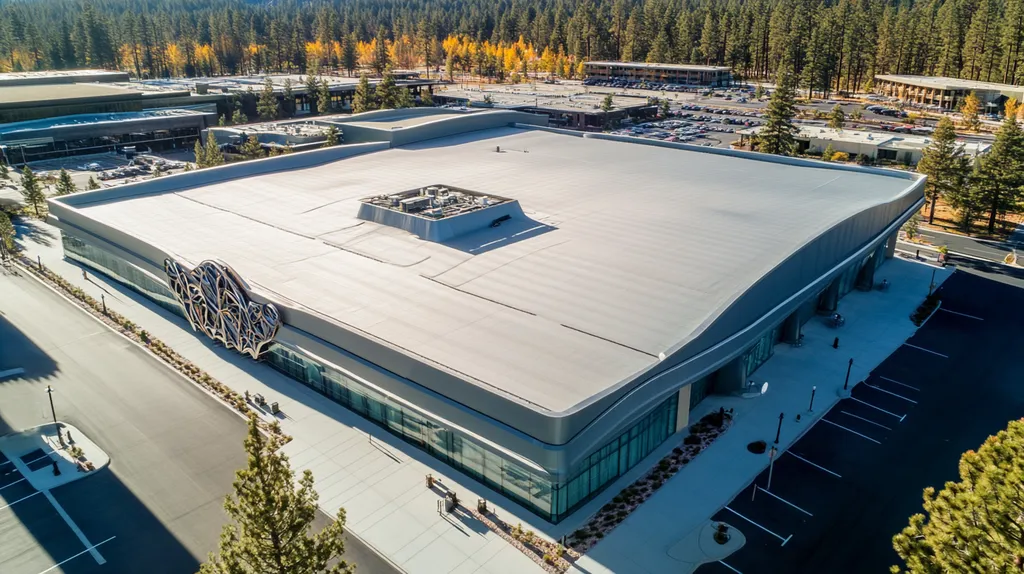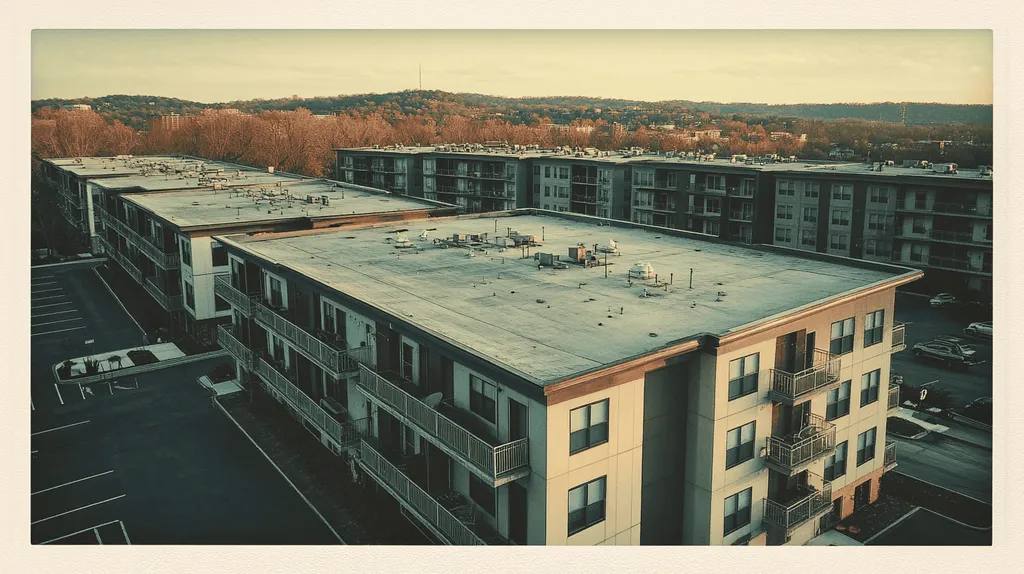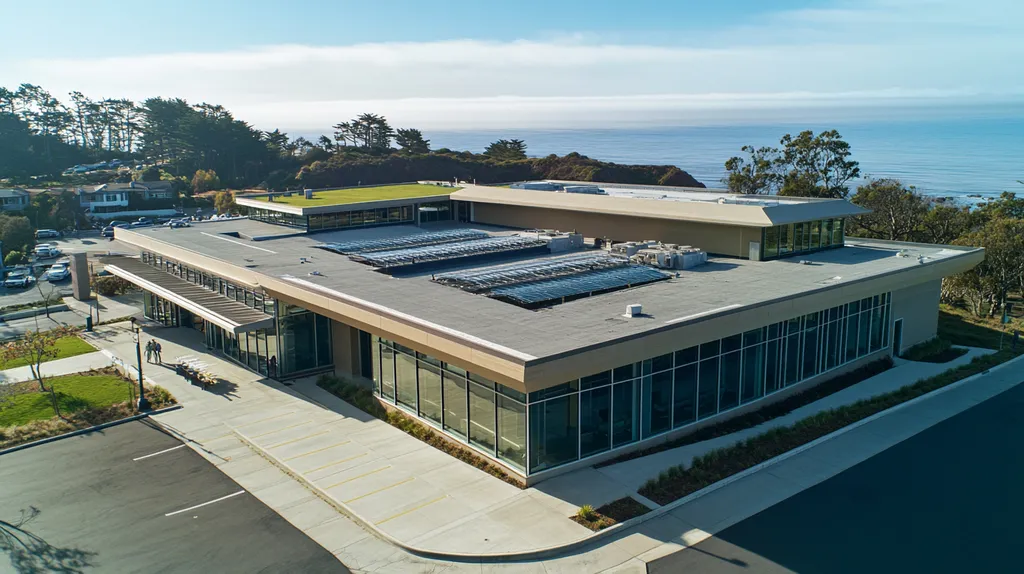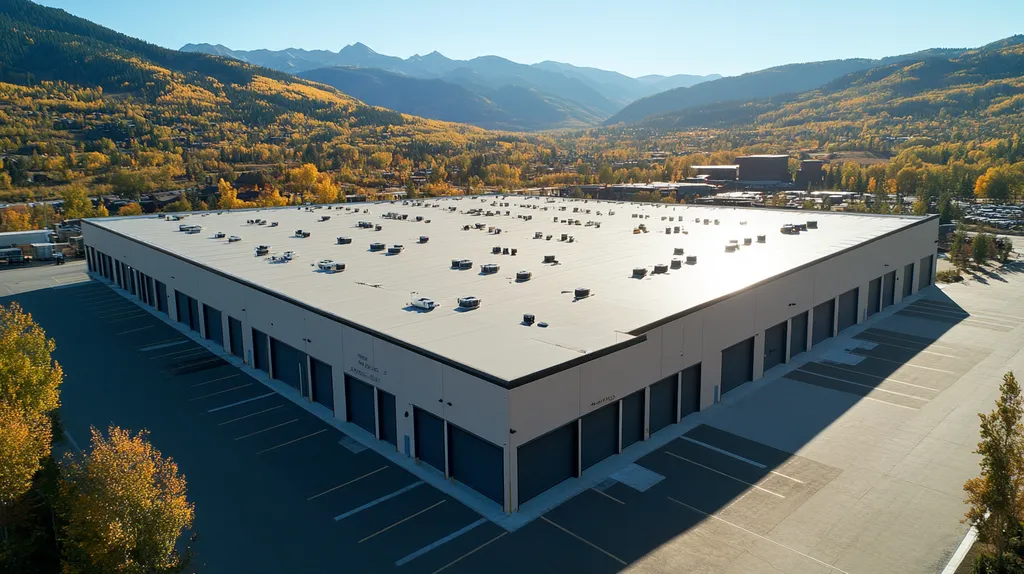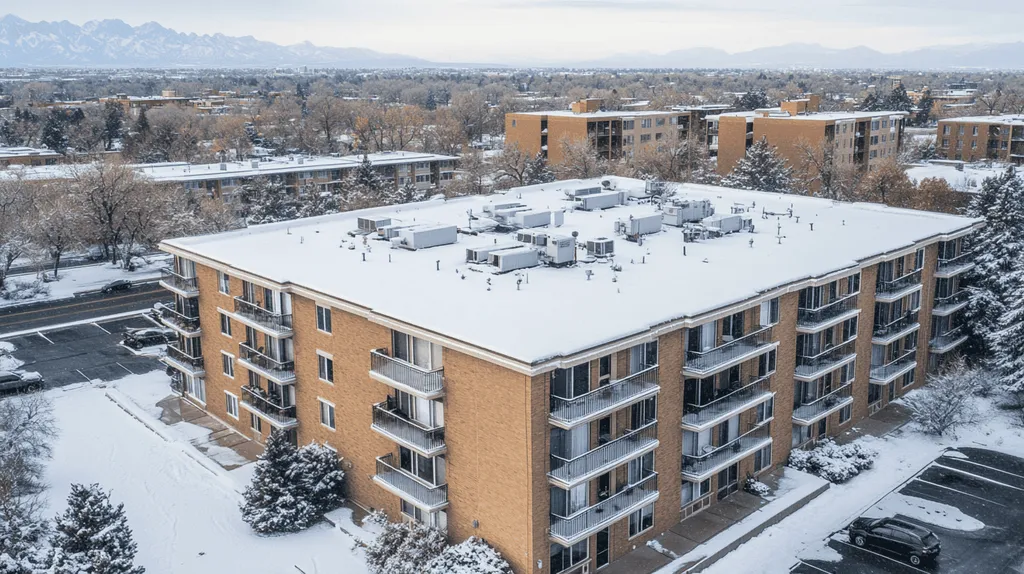Welcome to today’s Battle Royale featuring two roofing heavyweights: “Silicone” in the east corner versus “Polyurethane” in the west!
Tonight’s showdown pits these contenders against each other across six punishing rounds designed to test every aspect of their performance for UV Rays Impact on Commercial Roof Coating Lifespan.
At stake? Millions in potential costs, decades of building protection, and the critical performance demands of modern commercial and industrial facilities.
Our professional judging panel will evaluate each round on technical merit, real-world performance, and value delivery. After all six rounds, we’ll declare our ultimate champion.
Ladies and gentlemen, facility managers and building owners… it’s time to rumble!
ROUND 1: INITIAL COSTS & INSTALLATION
In the high-stakes world of commercial roofing, UV radiation poses a constant threat to coating longevity and performance. Property owners face a critical decision between silicone and polyurethane coatings, with initial investments ranging from $50,000 to $200,000 for typical commercial installations. Making the wrong choice can lead to premature coating failure and costly reapplication cycles.
Material Expenses
Material selection directly impacts both immediate costs and long-term UV protection capabilities. Silicone coatings command premium pricing, typically ranging from $1.75 to $2.50 per square foot for commercial-grade materials.
Polyurethane coatings offer a more attractive initial price point between $0.90 and $1.70 per square foot. However, these coatings do not offer the same level of UV protection as silicone coatings, which can reflect a significant portion of the sun’s UV rays. (source: Performance Painting)
While the upfront cost difference is substantial, silicone’s superior UV resistance typically results in longer coating lifespans and reduced replacement frequency.
ADVANTAGE: Polyurethane (on initial cost only)
Installation Complexity
Installation procedures significantly affect both project costs and coating performance. Silicone coatings typically require minimal surface preparation and can often be applied in a single coat, streamlining the installation process.
Polyurethane systems demand extensive surface preparation and usually require multiple coats with specific cure times between applications. This complexity increases labor costs and extends project timelines.
The simpler installation process for silicone coatings reduces the risk of application errors that could compromise UV protection. Additionally, fewer application steps mean lower labor costs and reduced chances of installation-related failures.
ADVANTAGE: Silicone
Project Timeline
Time efficiency in commercial roofing projects directly affects business operations and bottom-line costs. Silicone coatings typically require 2-4 hours between coats and achieve full cure within 24-48 hours.
Polyurethane installations demand strict humidity control and longer cure times between multiple coats. Complete curing can take 72-96 hours, potentially extending project timelines by several days.
Faster installation and cure times for silicone coatings minimize business disruption and allow for quicker return to normal operations. This efficiency becomes particularly crucial during emergency repairs or weather-sensitive installations.
ADVANTAGE: Silicone
ROUND 1 WINNER: Silicone Coatings
ROUND 2: DURABILITY & LIFESPAN
Commercial roof coating durability directly impacts building protection and operational costs. When UV radiation constantly bombards roofing surfaces, the wrong coating choice can lead to premature degradation, requiring expensive replacements every 3-5 years instead of lasting 10-15 years. Property owners must carefully evaluate how different coating materials perform under intense solar exposure.
Impact of UV Rays on Silicone Coatings
Silicone coatings excel in UV resistance through their molecular structure, which remains stable even under intense solar exposure. Their high reflectivity prevents UV rays from penetrating and degrading the underlying roof structure.
Modern silicone formulations maintain flexibility throughout their lifespan, preventing cracks that could compromise the roof’s integrity. This elasticity allows the coating to expand and contract with temperature changes while maintaining its protective properties.
Most importantly, silicone coatings retain their protective capabilities for 15-20 years with minimal degradation in UV-intensive environments. Their resistance to chalking and erosion ensures consistent performance throughout their service life.
ADVANTAGE: Silicone
Impact of UV Rays on Polyurethane Coatings
Polyurethane coatings demonstrate strong initial UV resistance but show vulnerability to prolonged exposure. The coating’s surface can become brittle and develop micro-cracks that compromise its protective abilities.
While polyurethane offers excellent chemical resistance, its UV stability diminishes over time. This degradation often manifests as yellowing and surface erosion, particularly in regions with high solar intensity.
The reduced UV resistance typically shortens the coating’s effective lifespan to 7-10 years in sun-exposed applications. This shorter service life necessitates more frequent recoating cycles, increasing long-term maintenance costs.
ADVANTAGE: Silicone
Comparative Longevity under UV Exposure
When examining long-term performance, silicone coatings maintain their protective properties with minimal thickness loss over time. Their stable chemical structure resists breaking down under UV exposure, ensuring consistent protection throughout their service life.
Polyurethane systems require more frequent maintenance inspections and often need recoating before reaching their expected lifespan. Their gradual deterioration under UV exposure can lead to unexpected repairs and increased maintenance costs.
The performance gap becomes particularly evident in high-UV environments, where silicone’s superior stability translates to longer protection and reduced maintenance requirements. This durability difference significantly impacts the total cost of ownership over the roof’s life cycle.
ADVANTAGE: Silicone
ROUND 2 WINNER: Silicone Coatings
ROUND 3: PERFORMANCE FACTORS
When commercial roof coatings fail due to UV exposure, repair costs can quickly escalate into six-figure territory. Performance factors directly impact how well these protective barriers shield valuable building assets from solar degradation. Property owners must evaluate specific performance metrics to avoid premature coating failure that could compromise their entire roofing system.
UV Resistance
UV resistance represents the coating’s fundamental ability to maintain structural integrity under constant solar bombardment. This characteristic determines how well the coating will protect both itself and the underlying roof structure from degradation.
Silicone coatings feature inherent UV stability at the molecular level, allowing them to maintain their protective properties even after decades of sun exposure. Their high reflectivity and chemical stability prevent UV rays from breaking down the coating structure.
Polyurethane coatings initially demonstrate good UV resistance but begin showing signs of degradation within 5-7 years of installation. Their molecular bonds gradually break down under sustained UV exposure, leading to surface chalking and reduced effectiveness.
ADVANTAGE: Silicone
Thermal Stability
Daily temperature fluctuations create expansion and contraction cycles that test coating durability. The coating must maintain flexibility and adhesion through these thermal changes while continuing to block UV radiation.
Silicone coatings retain their elastomeric properties across extreme temperature ranges, allowing them to flex without cracking or separating from the substrate. This flexibility ensures continuous UV protection even during severe thermal cycling.
Polyurethane systems become increasingly rigid over time, making them more susceptible to cracking during thermal cycles. These physical breaks in the coating create vulnerable points where UV radiation can penetrate and damage the roof structure.
ADVANTAGE: Silicone
Maintenance Requirements
Regular maintenance impacts both long-term performance and operational costs. The coating’s resistance to UV degradation directly affects inspection frequency and repair needs.
Silicone coatings typically require only annual inspections and minimal maintenance due to their sustained UV resistance. Their stable chemical composition means fewer repairs and touch-ups throughout the service life.
Polyurethane coatings demand quarterly inspections and more frequent maintenance as UV exposure progressively degrades their protective capabilities. This increased maintenance burden translates to higher labor costs and more frequent coating renewals.
ADVANTAGE: Silicone
ROUND 3 WINNER: Silicone Coatings
ROUND 4: MAINTENANCE REQUIREMENTS
Commercial roof coating maintenance represents a critical factor in protecting multi-million dollar building assets. Poor maintenance practices can accelerate UV degradation, potentially reducing a coating’s lifespan by 50% or more. Property owners must carefully evaluate maintenance demands to avoid unexpected coating failures that could compromise entire roofing systems.
Routine Inspection Requirements
Regular inspections form the foundation of effective coating maintenance programs. These evaluations help identify early signs of UV degradation before they lead to system failure.
Silicone coatings typically require only bi-annual professional inspections due to their superior UV stability. Their resistance to chalking and surface deterioration means fewer inspection points and reduced monitoring needs.
Polyurethane coatings demand quarterly inspections to track UV-related degradation patterns. Surface chalking, discoloration, and potential cracking require vigilant monitoring to prevent coating failure.
ADVANTAGE: Silicone
Cleaning and Surface Maintenance
When UV rays hit the surface of a roof, they begin breaking down the coating’s structural makeup. Regular cleaning helps maintain reflectivity and prolongs coating effectiveness. (source: Performance Painting)
Silicone coatings resist dirt accumulation and typically require only annual cleaning to maintain optimal performance. Their non-stick surface characteristics help prevent debris buildup that could compromise UV protection.
Polyurethane coatings need more frequent cleaning cycles, often quarterly, to prevent surface contamination. Their tendency to attract and hold dirt can accelerate UV degradation if not properly maintained.
ADVANTAGE: Silicone
Repair and Recoating Frequency
The frequency of necessary repairs and recoating directly impacts maintenance costs and facility operations. Prevention-focused maintenance programs can significantly extend coating lifespans.
Silicone coatings rarely require spot repairs and typically need recoating only after 15-20 years of service. Their molecular stability under UV exposure minimizes the need for touch-ups or partial recoating.
Polyurethane systems often need localized repairs within 5-7 years and complete recoating at 10-year intervals. Their gradual degradation under UV exposure necessitates more frequent maintenance interventions.
ADVANTAGE: Silicone
ROUND 4 WINNER: Silicone Coatings
ROUND 5: SUSTAINABILITY CREDENTIALS
Environmental impact and sustainability have become critical factors in commercial roofing decisions, with potential penalties for non-compliance reaching $50,000 or more in some jurisdictions. Property owners must evaluate how coating choices affect both environmental footprint and long-term building performance. When UV exposure accelerates material degradation, the wrong coating choice can double waste production and energy costs.
Environmental Impact
Sustainable roofing practices directly influence both environmental compliance and operational costs. The environmental impact of coating materials encompasses their production, application, service life, and eventual disposal.
Silicone coatings feature lower VOC emissions during application and can be recoated without removal of existing layers. Their superior UV resistance means less frequent replacement cycles, reducing waste production and disposal impacts.
Polyurethane coatings often require complete removal before reapplication, generating significant waste. Their shorter lifespan under UV exposure leads to more frequent replacement cycles and increased environmental burden.
ADVANTAGE: Silicone
Energy Efficiency
When UV rays hit the surface of a roof, they begin breaking down the coating’s structural makeup. A coating’s ability to reflect these rays directly impacts building energy consumption and internal temperature control. (source: Performance Painting)
Silicone coatings maintain their reflective properties throughout their service life, consistently reducing cooling loads. Their stable molecular structure resists degradation that could compromise energy performance.
Polyurethane coatings experience gradual loss of reflective properties as UV exposure causes surface deterioration. This degradation progressively reduces energy efficiency benefits over time.
ADVANTAGE: Silicone
Carbon Footprint
The total carbon impact of roofing materials encompasses manufacturing, transportation, installation, and replacement cycles. Longer-lasting materials significantly reduce the overall carbon footprint of building operations.
Silicone coatings require fewer replacement cycles due to their superior UV resistance, reducing transportation and installation-related emissions. Their extended service life minimizes the carbon impact of manufacturing replacement materials.
Polyurethane systems demand more frequent replacements, increasing transportation and installation emissions. Their shorter lifespan under UV exposure results in higher cumulative carbon costs over the building’s life cycle.
ADVANTAGE: Silicone
ROUND 5 WINNER: Silicone Coatings
ROUND 6: SPECIALIZED APPLICATIONS
In specialized commercial roofing applications, UV exposure can reduce coating lifespans by up to 70% if the wrong system is selected. With replacement costs ranging from $50,000 to $200,000, property managers must carefully evaluate how different coatings perform in challenging environments. Understanding performance characteristics becomes crucial when protecting specialized roof configurations from intense solar degradation.
Performance in Extreme UV Environments
In regions with intense solar exposure, coating degradation accelerates dramatically. The wrong choice can lead to system failure within 2-3 years instead of the expected 15-20 year lifespan.
Silicone coatings provide exceptional UV protection and are resistant to ponding water, making them suitable for flat or low-slope roofs. Their molecular structure maintains flexibility over time, preventing cracking and damage due to temperature fluctuations. (source: Command Roofing)
Polyurethane coatings show accelerated degradation in high-UV environments, leading to surface chalking and loss of protective properties. Their reduced UV stability requires more frequent recoating cycles to maintain adequate protection.
ADVANTAGE: Silicone
Applications in Urban Areas
Urban environments present unique challenges with their combination of pollution, heat island effects, and reflected UV radiation. These conditions can amplify coating degradation and reduce protective performance.
Silicone coatings resist urban pollutants and maintain their reflective properties even with minimal maintenance. Their chemical stability prevents degradation from acid rain and industrial emissions.
Polyurethane systems show increased vulnerability to urban environmental stresses. Their surface properties degrade more quickly when exposed to combined UV and chemical attack from pollution.
ADVANTAGE: Silicone
Adaptability to Unique Roof Configurations
Complex roof geometries create areas of concentrated UV exposure and challenging application conditions. These variations can lead to premature coating failure if the wrong system is selected.
Silicone coatings form seamless membranes that conform to irregular surfaces and maintain consistent protection. Their superior flow characteristics ensure uniform coverage even on complex architectural details.
Polyurethane applications often struggle with complex geometries, leading to thickness variations and potential weak points. Their reduced flexibility can create stress points where roof planes intersect.
ADVANTAGE: Silicone
ROUND 6 WINNER: Silicone Coatings
AND THE WINNER IS…
After six grueling rounds of technical evaluation, we have our verdict…
Ladies and gentlemen, in a stunning display of technical superiority, SILICONE COATINGS have emerged as our undisputed champion, winning all six rounds of competition!
Silicone dominated this matchup with exceptional UV resistance, minimal maintenance requirements, and superior longevity. Its performance in extreme conditions and sustainable credentials delivered knockout blows in critical categories.
While Polyurethane may have taken an early points advantage with lower initial costs, it couldn’t withstand Silicone’s relentless assault on long-term performance metrics. However, Polyurethane remains a solid contender for short-term applications and projects with tight initial budgets.
IMPORTANT NOTICE: Every building presents unique challenges that may affect coating performance. Local climate conditions, substrate materials, and specific property requirements can all impact results. This analysis provides general guidance but cannot account for all variables. Property owners should consult with qualified roofing professionals who can evaluate their specific situation.
In the high-stakes arena of commercial roofing, there’s no substitute for making an informed choice. Like any championship bout, victory goes to those who match their building’s specific needs with the right contender’s strengths. Choose wisely, building warriors – your roof’s future depends on it!
FREQUENTLY ASKED QUESTIONS
Q. What are the initial costs for commercial roof coatings?
A. Initial costs for commercial roof coatings range from $50,000 to $200,000. Silicone coatings tend to be more expensive but offer better long-term value due to higher UV resistance and longevity. Polyurethane coatings have a lower upfront cost but may incur higher maintenance and replacement costs over time.
Q. How does UV exposure affect the longevity of commercial roofs?
A. UV exposure can significantly shorten the lifespan of commercial roofs. Silicone coatings maintain their protective properties for 15-20 years, while polyurethane coatings typically last 7-10 years under similar conditions. Choosing the right coating material is crucial for maximizing durability in UV-intensive environments.
Q. What performance factors should I consider for an industrial roof?
A. Important performance factors include UV resistance, thermal stability, and maintenance requirements. Silicone coatings excel in these areas, offering superior UV protection and requiring less frequent maintenance compared to polyurethane options. Evaluating these factors can help prevent costly repairs and extend the life of your roof.
Q. How can maintenance impact the lifespan of a commercial roof?
A. Regular maintenance is key to maximizing the life of a commercial roof. Silicone roofs typically require less maintenance, needing only bi-annual inspections, whereas polyurethane roofs require quarterly checks. Neglecting maintenance can lead to accelerated UV degradation and a significantly shortened lifespan.
Q. What is the environmental impact of commercial roof coatings?
A. The environmental impact varies by coating type. Silicone coatings emit fewer VOCs and last longer, generating less waste. In contrast, polyurethane coatings often require complete removal during reapplication, leading to increased material waste. Choosing environmentally friendly options can benefit both compliance and sustainability.
Q. How do coatings perform in extreme UV environments for commercial roofs?
A. In extreme UV environments, silicone coatings offer superior performance, maintaining flexibility and preventing cracking. They are ideal for flat or low-slope roofs. On the other hand, polyurethane coatings degrade more rapidly, often requiring replacement within 2-3 years, significantly increasing costs and performance issues.
Q. Are there special considerations for industrial roof coatings?
A. Yes, factors such as the roof’s slope, environmental exposure, and potential chemical interactions must be considered. Silicone coatings are versatile, making them suitable for various environments. It’s essential to evaluate each roof’s specific needs to ensure optimal coating performance and longevity.

